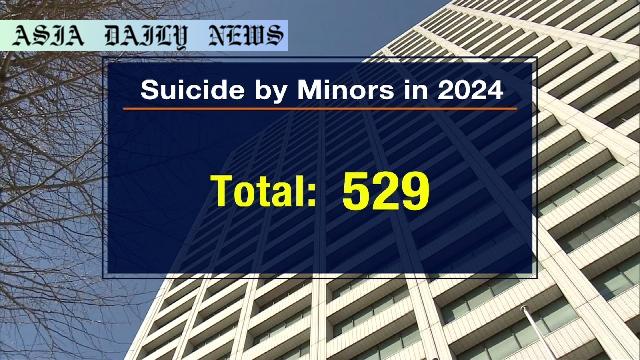Suicides among students in Japan reached a record 529 cases in 2024, surpassing 2022 numbers and highlighting deep-seated issues.
Record 529 student suicides occurred in Japan in 2024.
Major contributors include school stress, health, and family issues.
Government to introduce measures like better support systems.

Record-High Student Suicides in 2024: Alarming Statistics
The year 2024 marked a harrowing milestone for Japan as student suicides reached a record 529, surpassing the previous peak of 514 cases recorded in 2022. This tragic statistic has shaken societal foundations, urging authorities and advocacy groups to take immediate action. The data compiled by Japan’s health and welfare ministry revealed a sobering trend: elementary, junior high, and high school students taking their own lives in increasing numbers.
One of the primary challenges brought to light was the multidimensional nature of the problem. Many cases cited school-related stress, including issues such as plunging academic performance and uncertainties regarding future career paths, as significant contributors. Health-related struggles like depression and other mental health challenges added to the toll, with family discord and strained parent-child relationships acting as additional factors. The multifaceted drivers of this crisis call for a multi-pronged and empathetic approach to tackle the issue from its roots.
Government Measures and Response
In response to the staggering numbers, the Children and Families Agency in Japan has stepped up its interventions. Officials vowed to dig deeper to understand the contributing factors, promising to actively engage young individuals to comprehend their challenges better. Their aim is to cultivate an atmosphere where minors can share their concerns more openly without stigma or fear of judgment.
Concrete steps to combat the crisis include broadening access to support structures, enhancing awareness about mental health among educators and caregivers, and equipping them with the skills to provide guidance and assistance. Efforts will also be concentrated on fine-tuning the communication strategies, ensuring that schoolchildren feel heard and supported in every aspect of their lives. The government also aims to increase nationwide initiatives to educate citizens on identifying warning signs of mental distress in youth.
The Bigger Picture: Total Suicides at a Historic Low
Interestingly, the alarming spike in student suicides contrasts sharply with a decline in overall suicides in Japan, which totaled 20,320 last year—the second-lowest figure since accurate recordkeeping commenced in 1978. While this indicates progress on some fronts, the crisis among children suggests an urgent need for specialized interventions that cater uniquely to younger demographics impacted by modern stressors like social media pressures, academic competition, and familial issues.
The cultural and societal implications of rising student suicides are profound for Japan. The societal model demands high performance at a young age, feeding into a high-pressure environment where many children feel isolated and overwhelmed. If not addressed, these stressors could grow unchecked, eroding public health gains seemingly reflected in the total reduction of suicides nationwide.
Empowering Teachers, Parents, and Peers
The solution to the youth suicide epidemic begins at the grassroots level, particularly within schools and families. Educators and caregivers alike must step up efforts to foster communication, empathy, and kindness. Observing psychological cues in students and the ability to intervene early can save lives. The government’s commitment to mental health training for adults engaging with children holds promise, provided these initiatives receive sufficient funding and implementation support.
Moreover, peer support networks could also play a significant role in suicide prevention. Encouraging classmates and friends to look out for one another and creating safe, inclusive atmospheres in schools could alleviate the compulsion to suppress emotions. These strategies would not only tackle suicide rates but also help nurture a more compassionate, mentally healthy society.
The Call for Comprehensive Solutions
What Japan ultimately needs is a structured, holistic national policy focused on mental health, youth empowerment, and awareness campaigns. Institutions, families, and communities must collaborate to ensure that future generations are nurtured to overcome challenges without resorting to tragic decisions. Community-based interventions should focus on addressing root causes like academic stress and familial pressures. Prevention, as underscored by various psychological studies, is infinitely better than mere damage control.
It’s not enough to acknowledge the crisis. Japan must invest heavily in understanding its younger generation, analyzing the evolution of societal pressures, and innovating intervention practices. With the right focus, the nation can bring down this appalling statistic and restore hope among its school-going population.



Commentary
Tackling a Youth Crisis: Deeper Insights
The staggering rise in Japanese student suicides brings to light the urgency of safeguarding mental health among young people. Every statistic represents a life lost prematurely, a family devastated, and a future wiped away—all deeply rooted in the nuances of societal expectations and systemic inadequacies. As an outside observer, this tragic reality demands thoughtful reflection on several fronts.
The Impact of Overwhelming Expectations
One obvious observation is that Japan’s cultural emphasis on academic achievement and discipline can inadvertently strain young individuals to their breaking point. Although striving for excellence is universal, the expectation to excel in a high-stakes environment places undue pressure on growing minds. It’s important to question whether this model, deeply ingrained for decades, can adapt to alleviate the mental health costs it inflicts. Balancing rigor with empathy is essential for creating a mutually supportive, yet ambitious academic environment.
Understanding Multifaceted Challenges
It’s equally essential to highlight the role of systemic issues that exacerbate youth struggles. Schools, as foundational institutions, must be equipped to identify mental health challenges early. However, addressing the issue requires amplifying partnerships among schools, families, and community services. Mental health professionals should be as integral to an educational system as teachers and administrators.
Spurring Hope Through Proactive Solutions
While Japanese authorities have taken the vital first steps toward change, more needs to happen to curb the rising suicide rates. Efforts such as fostering dialogue, empowering teachers with mental health literacy, and involving communities in nurturing youth emotional resilience will undoubtedly contribute to long-term solutions. By being proactive and prioritizing preventive approaches, Japan can save lives and redefine how society nurtures youth development.